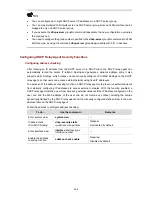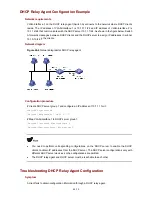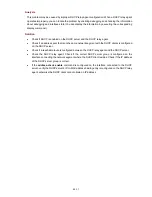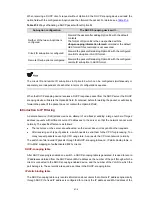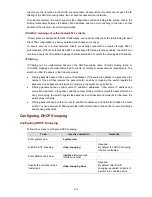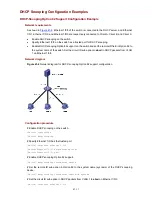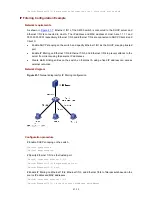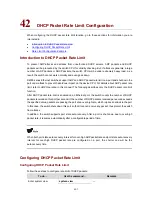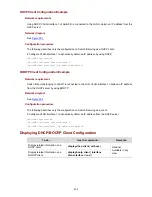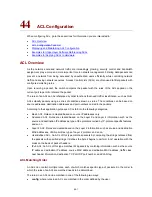
41-9
z
If you configure a remote ID sub-option in both system view and on a port, the remote ID
l remote
z
h the
vlan
vlan-id
argument specified, and the other one
z
the primary and member ports
z
sub-option configured on the port applies when the port receives a packet, and the globa
ID applies to other interfaces that have no remote ID sub-option configured.
If you have configured a remote ID wit
without the argument in Ethernet port view, the former remote ID applies to the DHCP messages
from the specified VLAN, while the latter one applies to DHCP messages from other VLANs.
In a port aggregation group, you can use this command to configure
respectively. When Option 82 is added, however, the remote ID is subject to the one configured on
the primary port.
The remote ID configured on a port will neither be synchronized in the case of port aggregation nor
support XRN.
Configuring
Foll
the padding format for Option 82
ow these steps to configure the padding format for Option 82:
To do…
Use the command…
Remarks
Enter system view
system-view
—
Config
for
in extended format.
ure the padding
mat
dhcp-snooping information
packet-format
{
extended |
standard
}
Optional
By default, the padding format is
Configuring IP Filtering
Follow these steps to configure IP filtering:
To do…
Use the command…
Remarks
Enter system vi
system-view
—
ew
Enter Ethernet port view
interface interface-type
ce-number
—
interfa
Create a static binding
ip
ip
[
mac-address mac-address
]
Optional
By default, no IP
static bin
ated.
source static binding
-address ip-address
ding entry
is cre
Enable IP filtering
based on the
DHCP-snooping table
binding table
ip check sou
dress
[
m
and the IP static
rce ip-ad
ac-address
]
Enable IP
filtering
Enable IP filtering
based on
authenticated 802.1x
clients
ip check dot1x enable
ither
quire
By default, this
function is disabled.
E
re
command is
d

